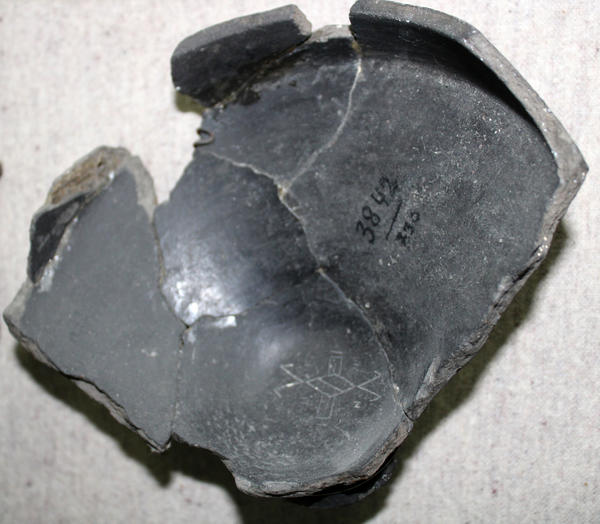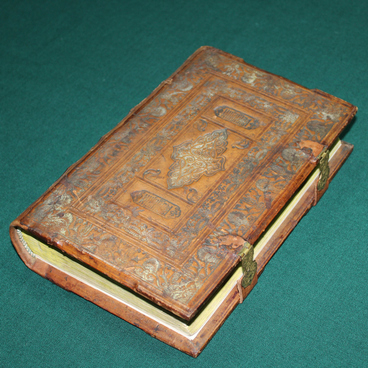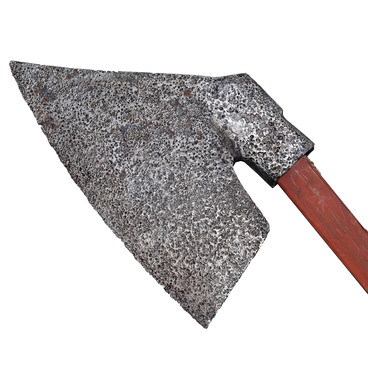The archeologist Fyodor Zavernyayev found this Ceramic bowl fragment with ornamented bottom in 1955. He was the head of excavations near the town of Pochep in Bryansk Region. The scientist determined that Zarubinets tribes who had arrived from the today’s Ukraine and Belarus were living in that territory. They founded Pochep settlement in the early 1st millennium A.D., and all the items discovered at the excavations belong to this period.
Body sherd
Время создания
1st-2nd centuries A.D.
Размер
Diameter of 10.8 cm
Техника
Сlay, hand moulding, glazing
Коллекция
Выставка
2
Открыть в приложении#1
Body sherd
#2
#4
Древние жители поселения лепили керамическую посуду руками, без гончарного круга. Вся она делилась на два вида: кухонная, в которой готовили и хранили пищу, и столовая, в которой ее подавали. Кухонные миски и горшки были грубыми и шероховатыми. Чаще всего их ничем не украшали, но иногда на стенку или дно наносили защитный символ, который считался оберегом от злых духов.
Bowls for serving food were often glazed before burning — the clay surface was polished with a smooth stone or with a special brush until it was shining. Then such bowl/jar was burnt in smoky flame until the surface turned black. The furnaces produced a lot of smoke, and that is why they were located outside. The finished dishes were decorated with basic floral or geometrical patterns capable of protecting from malignant demons or of assuring prosperity and fertility.
#5
The bowl found near the town of Pochep had a conic shape gradually dilating from the bottom. The ancient pot-maker moulded a sharp edge in its upper part, and because of that, the rims of the bowl were slightly bent inward. It prevented spilling or pouring out of the contents. Fyodor Zavernyayev assumed that the inhabitants of Pochep settlement adopted this kind of shape from the ancient Transcarpathian culture.
#6
Body sherd
#7
A fragment of engraving is preserved on the bottom of the black ceramic bowl from Pochep — it is a rhomb with crotchets on the tops. Sergei Rassadin, a historian and archeologist from Belarus, assumed that such ornament dates back to the Paleolithic times: similar diamond-like patterns could be seen on the sections of mammoth tusks, and ancient people could copy them. The scientist Anatoly Ambroz believed that in the beginning of the Common Era such pattern symbolized the fertility: it conventionally depicted a plant, earth and a woman simultaneously. Such rhombs are often found on ancient embroideries.
A fragment of on the bottom of the black ceramic bowl from Pochep
#8
State Budgetary Cultural Institution Bryansk Regional Ethnography Museum
читать дальшескрыть
00:00
00:00
1x
Body sherd
Время создания
1st-2nd centuries A.D.
Размер
Diameter of 10.8 cm
Техника
Сlay, hand moulding, glazing
Коллекция
Выставка
2
Открыть в приложении
Поделиться


